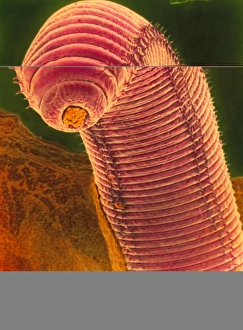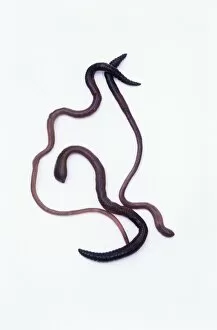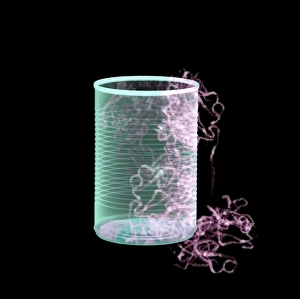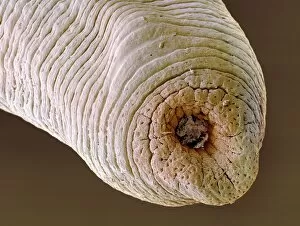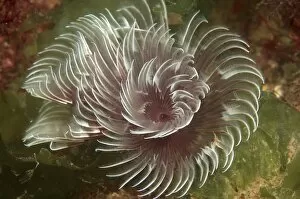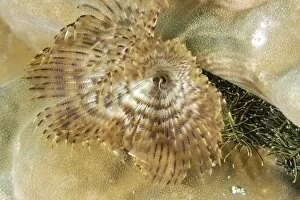Annelida Collection (page 2)
"Exploring the Enigmatic Annelida: A Journey into the World of Worms" Dive into the fascinating world of annelids
All Professionally Made to Order for Quick Shipping
"Exploring the Enigmatic Annelida: A Journey into the World of Worms" Dive into the fascinating world of annelids, a diverse group of segmented worms that inhabit various aquatic environments. In this captivating journey, we uncover some intriguing hints about these remarkable creatures. In one snapshot, a scientist delicately examines a ragworm specimen under a scanning electron microscope (SEM), revealing intricate details of its mouth structure. This glimpse into their anatomy offers insights into their feeding habits and survival strategies. Moving to New Caledonia's vibrant coral reefs, we encounter an enchanting scene where hard coral (Porites lutea) serves as a colorful backdrop for Christmas-tree worms (Spirobranchus giganteus). These magnificent spiraling structures created by annelids add splashes of vivid hues to the underwater landscape. Venturing further to Rinca in Indonesia, we witness the gracefulness of feather duster worms (Sabellidae). Their elegant plume-like appendages sway gently with the currents, creating mesmerizing patterns that captivate any observer lucky enough to witness such beauty. Meanwhile, in Kinabalu National Park in Borneo, an extraordinary sight unfolds as a Kinabalu giant red leech (Mimobdella buettikoferi) feeds on its colossal prey - the Kinabalu giant earthworm. Nature's delicate balance is showcased through this predator-prey interaction between two unique annelid species. Shifting our focus to Puerto Galera in the Philippines reveals kaleidoscopic images of Variegated feather duster worms (Bispira variegata). These stunning creatures exhibit an array of vibrant colors and intricate patterns that resemble living works of art adorning oceanic landscapes. Delving deeper into burrows along Atlantic shores unveils another spectacle - Atlantic Palolo worm (Eunice fucata) emerging from her hiding place in search of nourishment.


